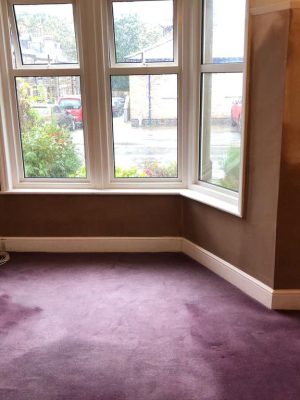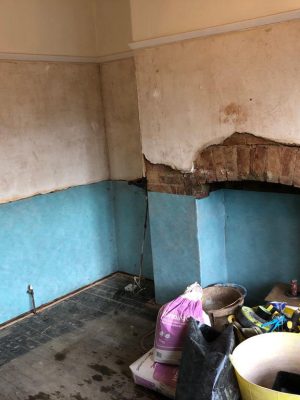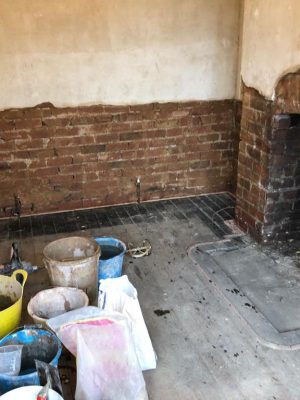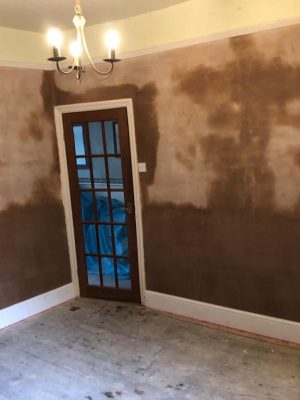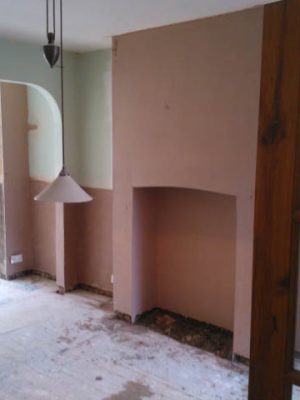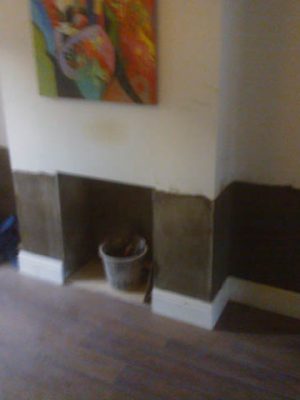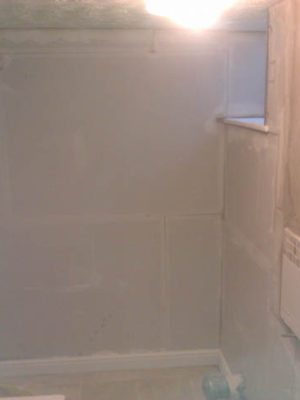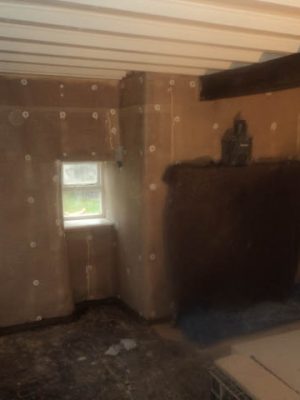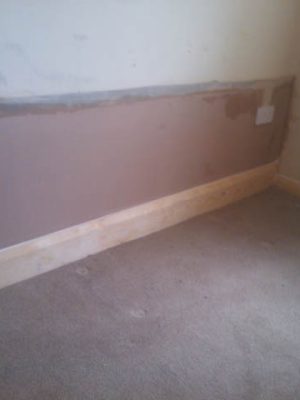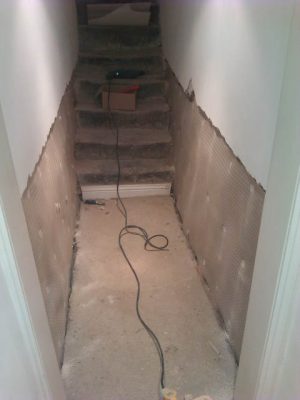At C.Ellmore Plastering, we have the experience and knowledge to ensure we offer you the correct damp proofing treatment for the right type of damp you may have in your home.
Our approach to damp proofing in the home is “belt and braces” every time! Ensuring our customers that every job we undertake we use the latest and most up to date methods, and quality of materials on the market to ensure a long-lasting damp proofing solution which can last up to a minimum of 50 years.
Not like many of the old out of date methods which have a much shorter life span.
This gives our customers and ourselves peace of mind that any areas of damp treated by C. Ellmore will last, without having to go through the disruption and expense of possibly having to have it all done again 10, or 20 years down the line.

There are many different types of damp in the home from rising and penetrating damp to condensation and mould. It is essential that the correct damp proofing method is used to ensure the job has been carried out right. That’s why we offer a free no obligation, in depth survey and quotation of your home, to establish the cause of damp and the correct method to be used to treat this.
Treatment for Rising Damp comprises;
- Removal of all damp/contaminated plasterwork, generally to a height of 1 – 1.2m
- Installation of a new chemical damp proof course to the base of the walls.
- Anti-sulphate treatment to neutralise any water salts and minerals.
- Fitting of Safeguard Drybase Flex Membrane using Drybase Flex Adhesive.
- Either solid two coat plastering, or dry lining & skim.
Treatment for Penetrating Damp comprises;
- Remedial work to be carried out where necessary to prevent further damage caused by penetrating damp, for example, external repointing of brick work/stone sealing etc
- Internally – removal of all damp/contaminated plasterwork
- Anti-sulphate treatment to neutralise any water salts and minerals.
- Fitting of Safeguard Drybase Flex Membrane using Drybase Flex Adhesive.
- Either solid two coat plastering, or dry lining & skim.
Treatment for condensation/mould does vary depending upon the homeowners’ living habits and the building itself. The correct treatment would be advised once a full survey has been carried out.
We can offer a complete damp proofing service;
- Removing and refitting floor coverings if required
- Joinery work including skirtings/architrave etc
- Removal and refitting of any electrical sockets, switches, ariel points etc
- Removal and refitting of any radiators if required, along with the removal of all building waste upon completion.
This is a cost-effective way for our customers as it eliminates the need to organise separate trades people before and after the damp proofing works and will in turn save you money and the inconvenience.
Damp Proofing Examples
You can browse through examples of our damp proofing work below. Click on any image to enlarge.

Does Harrogate have a damp problem?
Harrogate is a spa town, it has a lot of flat areas where the water table is high. It was ranked as the 5th most likely location in the UK to flood.
The Stray has to be one of the best examples of that, I’ve been in many houses where there is standing water under the house, I’ve seen quite a few homes in The Stray with sump pumps installed under the floor. It’s a big issue and a horrible shock for many home buyers as surveyors don’t go around pulling up floorboards, so these issues never appeared on their homebuyers survey.
My work will typically see me in Bilton, on Leeds Road, Harlow Hill working on a 2 or 3 bed terraced houses built around the turn of the last century. On the ground floor there will be rising damp, particularly round the chimney breasts.
Signs of damp
Keep a beady eye out for any of the following;
- Peeling/blistering paint around floor level
- Crumbling plaster
- Salt deposits
- Rotting skirting boards
- Tide marks on walls
- Black mould (although often that is down to condensation/ventilation)
A classic tell-tale sign is metre high tongue and groove panelling. If you are looking round a house you are thinking of buying, be prepared to find/expose rising damp problems – odds are it will be there to cover up those up.
I use a moisture meter to test the walls, the same type a surveyor would use. I also use a humidity moisture meter to test the levels in the air in the house, condensation can play a big part.

Why do houses in Harrogate have damp?
The majority of the houses built in Harrogate around the early 1900s did not have any damp proof courses installed at the time they were built.
People bemoan modern builders but the builders of yesteryear didn’t always get everything right. When the builders of these Victorian houses realised they needed to include a damp proof course they initially used slate, and then bitumen. The problem is that bitumen only has a lifespan of around 80 years before it starts to perish. Which keeps me very busy, as they are all now failing.
There are loads of reasons why your house might have damp;
Bridging
If there is a damp proof course and it has failed, the issue could be that it’s been bridged somehow. That can happen if there is rendering on the outside of the brickwork and they’ve rendered right down below the damp proof course (dpc) when they should stop a minimum of 150mm from the ground with a stop bead.
Poor Maintenance
Blocked gutters, broken downpipes leading to rain running down the brickwork. Keep on top of your maintenance, you’ll pay for it in the long run!
Raised External Ground Level
Commonly a damp proof course can fail because the external ground level has been raised over the level of the dpc. Patios laid on top of other patios, driveways on top of existing driveways.
Companies doing driveways have a terrible habit of throwing a new driveway down on top of the old one rather than digging the original one out first. The new driveway is either over the top of the dpc or so close that rainsplash bounces up and hits the brickwork above it. The dpc needs to be a minimum 150mm above the ground really.
And of course, these driveway companies get their money and head off into the sunset leaving the homeowner with a damp timebomb ticking away.
Chimneys
I mentioned earlier chimneys are always a problem in Harrogate. The reason you get a lot of damp around chimney breasts is due to the sheer mass of masonry sitting in wet foundations. More brickwork means a concentrated capillary effect drawing up more water.
If an old chimney has been capped they’ve often been left unventilated, so you get a moisture build up inside the sealed chimney due to condensation.
Worse, chimney pots with no cowl on them. I see this all the time, it is absolute madness, rain being allowed to fall and just run down the insides of the chimney breast to the base.
Cowboy Corner – how not to do it

Many of the jobs I work on have already been worked on. Badly. Whether through lack of knowledge, lack of care or just downright laziness, some character has been at it in the past and either not fixed it or actually made things worse.
Bad workmanship
This is one of the reasons I am always on site doing the work myself, frankly I wouldn’t trust anybody else to do it. If you hire me you get me.
I’ve been at loads of jobs where a previous damp proof treatment has failed. And often, when I strip everything back to see why, it’s because they haven’t drilled far enough before applying the chemical treatment.
Some lazy cowboy has just drilled in a short way, injected the damp proofing and moved on. Nowhere near deep enough for it to work. It’s often with big companies where you see this, I am guessing it is uncaring subcontractors.
Drilling brick rather than mortar
This possibly isn’t real cowboy behaviour, just lack of knowledge. 20 years ago damp proofers tended to drill the brick. The chemical damp proof course works much better when injected into the mortar rather than the brick, as it’s so much more absorbent.
In fact, in houses around Harrogate made of red brick, the brick is se dense that with rising damp the capillary action is going through the mortar rather than the brick.
Not taking skirting board off
This one really annoys me. Come on. It’s so lazy, leaving the wet and rotting skirting board on and drilling and injecting a chemical damp proof course above it. So sloppy.
Rendering externally
I still come across jobs where some bright spark has decided that rendering the outside of the walls will fix the damp issue as they think the moisture is wicking in horizontally from the outside. When it has been wicking up through capillary action and by rendering the outside it actually accelerates the vertical speed the damp rises as none of the moisture is able to evaporate away externally.
Not fixing root problem
Removing the old wet plaster and then drylining with new plasterboard over the wet walls. Yee ha! Taking the money, not solving the problem, just delaying the reappearance of it. Shocking, don’t know how they can sleep at night.
Sometimes they’ll just cover it over with thermal insulation plasterboard. The damp isn’t able to wick through the layer of thermal insulation, but it’s not fixing the problem. And the damp eventually wicks up over the top of it.
Using the wrong plaster
After applying a chemical dpc you can’t use any gypsum based products directly onto the wet walls. You need to use a waterproof barrier or membrane, or alternatively use cement based plastering products. I use membrane.
Damp Proofing Case Studies
Woodlands Methodist Church, Wetherby Road
Problem : Rising damp in the toilet areas due to high external ground level. Block paving had been laid outside on top of the existing level. The top of the paving was below the damp proof course but only by 2 inches, so rain splash would be hitting the walls above the dpc leading to rising and penetrating damp. Solid walls, no cavity.
Solution : Brick/stone sealer applied externally to a metre in height. Removed all plaster internally, drilling and injected new chemical damp proof course slightly higher than the original but level with the internal floor.
Damp Proof Seal Paint
I’m adding this section in at the end. It’s not fair to add it to the ‘Cowboy’ section, lots of domestic customers try to solve their damp problem using the “DIY fix” of buying and applying damp proof seal paint. It’s just a waste of your time and money.
At best it might offer some very short term protection but it doesn’t address or rectify the root cause of the problem. Don’t waste your money.







